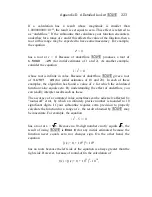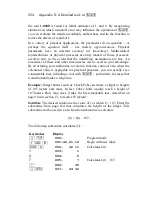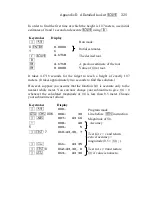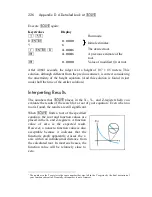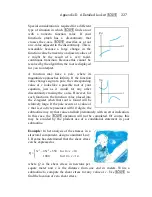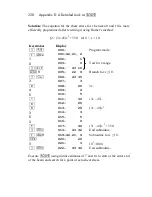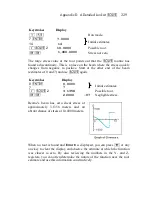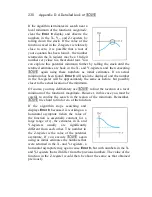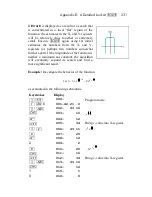
216 Appendix C: Memory Allocation
1. Place
dd
, the
number of the highest data storage register you want
allocated,
into the display. 1
dd
65. The number of registers in the
uncommitted pool (and therefore
potentially
available for
programming) will be (65 –
dd
).
2. Press
´
m
%
.
There are two ways to review your allocation:
Press
lm
%
to recall into the stack the number of the
highest-allocated data storage register,
dd
.
(Programmable.)
Press
|
W
(as explained above) to view a more complete
memory status (
dd uu pp-b
).
Keystrokes
Display
(assuming a
cleared program memory
)
*
1
´
m
%
1.0000
R
1
, R
0
, and R
I
allocated for data storage. Sixty-
four registers are uncommitted;
none contain program instructions.
|
W
(hold)
1 64 0-0
19
´
m
%
19.0000
R
19
(R
.9
) is the highest-numbered
data storage register. Forty-six
registers left in the common pool.
l
m
%
19.0000
Restrictions on Reallocation
Continuous Memory will maintain the configuration you allocate until a
new
m
%
is executed or Continuous Memory is reset. If you try to
allocate a number less than 1,
dd
= 1. If you try to allocate a number greater
than 65,
Error 10
results.
*
If program memory is not cleared, the number of uncommitted registers (
uu
) is less owing to allocation of
registers to program memory (
pp
). Therefore,
pp
would be >0 and
b
would vary.
Summary of Contents for HP-15C
Page 1: ...HP 15C Owner s Handbook HP Part Number 00015 90001 Edition 2 4 Sep 2011 ...
Page 17: ...Part l HP 15C Fundamentals ...
Page 64: ......
Page 65: ...Part ll HP 15C Programming ...
Page 118: ...118 ...






















